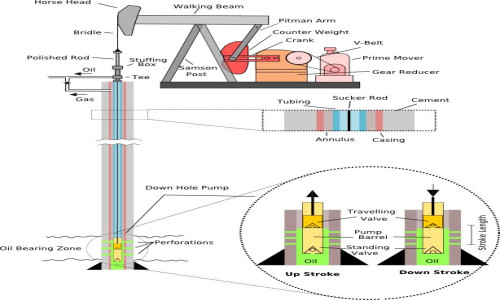Pumping Units
What is the famous Pumping Unit that everyone often sees? How does it work?
Although they sound strange, in many countries they resemble animals grazing. Pumping units, also known as horsehead pumps or nodding donkeys, are important equipment widely used in the oil industry for extracting crude oil from oil wells. These mechanical devices play a significant role in the production process of extracting oil from underground resources.
Function of Pumping Units
Primary Oil Extraction: The main function of a pumping unit (oil pump) is to extract crude oil from underground reservoirs. It operates by using piston rods, also known as sucker rods, which are connected to the well pump installed in the well.
Reciprocal Movement: The main driving force - usually an electric motor or natural gas engine - converts reciprocating motion into reciprocating motion. This reciprocal movement allows the sucker rods to move up and down, enabling the crude oil to be drawn to the surface from the well.
Lifting Rods and Pump: The lifting rods extend down to the depths of the well and are connected to the well pump located at the bottom of the well. As the pump components move up and down, the lifting rods are activated, and the well pump allows the oil to be raised from the depths of the well through the well casing.
Artificial Lifting Technique: Pump jacks are part of the artificial lifting technique used to continue and increase oil production in wells when natural pressure is insufficient to lift oil to the surface. This method regulates the pressure in declining natural reserves, enabling continuous fuel production.
Monitoring and Maintenance: Oil pumps require regular monitoring and technical service to ensure optimal operation. Engineers and operators monitor various parameters such as pump speed, fluid production rates, and well pressure to maintain efficiency and identify any operational issues.
Versatility and Compatibility: Pumping units are available in various sizes and configurations to suit different well depths, reservoir characteristics, and production levels. Their adaptability allows them to be used in a wide variety of oil fields and geological formations, including deep wells.
Role in the Oil Industry: Pumping units remain a common sight in many oil-producing regions of the world. Despite the emergence of new technologies such as electric submersible pumps or hydraulic pump systems, pumping units, especially in mature oil fields, continue to be a cost-effective and reliable method for extracting crude oil.
Oil pumps (Pumping Units) play a crucial role in the extraction of crude oil from underground reservoirs. Their mechanical pumping action ensures the continuous lifting of oil to the surface from oil wells, ensuring a steady production rate from oil wells. Despite advances in technology, pumps remain an integral part of the oil industry, contributing significantly to global oil production. Their reliability, adaptability, and efficiency have long made pumping units the most optimal element in oil production operations, especially in traditional production methods.

